INTRODUCTION AND HISTORY
Carrying extra gas for 4WD trips is by no means a new thing. In fact, it is easy to see from the military vehicles of past wars, where the popularity, or need, for extra gas may have originated (or got a huge boost.). Unlike the mass migration of gasoline vehicle, western bound settlers of the 20th century, military vehicles frequently used roads where no gas stations existed, and even more often, made their own roads, also where there were no gas stations.
Sound familiar??? Yes, yes, yes, I know that we are rarely allowed to make our own trails, but we do share one thing in common with those military vehicles of the past - N0 gas stations in the remote areas we travel. Unless one is prepared to severely limit the miles traveled on an outback adventure, then we must carry sufficient gas to make the entire trip.
With the natural explosion of gear intended for the remote destination traveler, it was only natural for there to be some great solutions to meet the need for additional fuel. While there are a whole lot of "extra fuel" containers on the market today, there is one that has been the most popular for the last 90 years - The German "Jerry Can.".
For many reasons, the German designed fuel can, known as the "Jerry can", has become, and remains, the most popular and most copied fuel container ever made. And for good reasons!!! For all of these reasons, it has become my favorite and most reliable way to carry extra fuel. The history of the Jerry can is a fascinating one and easily found by a quick search on the internet. In particular, an excellent history can be found at Carryology (
http://www.carryology.com/utility/carry ... -jerrycan/ ). Briefly, it began in the 1930' as the German Nation was preparing for it's many aggressions which would follow. From the Carryology website:
The Jerry can was developed in Germany in the 1930’s for military use. Wars are won and lost with resources. One of the most important resources being fuel. That fuel must be efficiently stored and transported to aide the soldiers and war machines on the front lines. No fuel and the tanks don’t roll. No tanks and the war is lost.
This picture offers some idea of the importance of the Jerry can in Germany's war effort, (From the Carryology website):
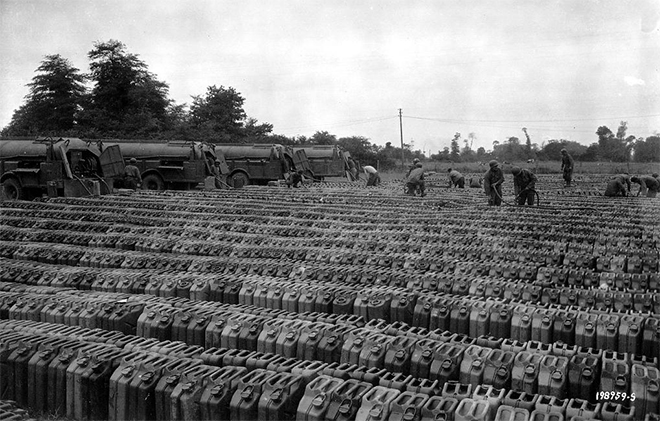
- German Jerry Can use.jpg (242.6 KiB) Viewed 920 times
The superiority of the Jerry can, as a fuel container, was recognized by the allies, who eventually adopted the design. It was easy to see why, especially when you consider the inferior containers that were in use at that time. The Brits fuel container was called a "flimsy", and for good and obvious reasons. They looked like this (From the Carryology website):
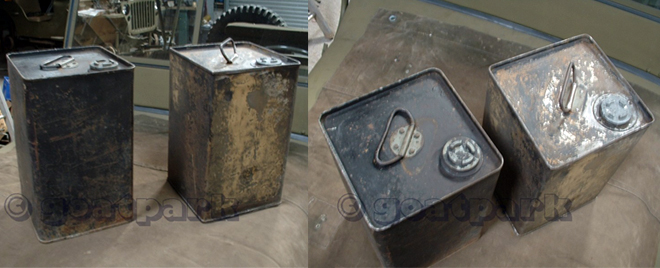
- Flimsies.jpg (158.12 KiB) Viewed 920 times
The advantages of the German designed Jerry can are numerous:
1. They held about 25% more fuel than the Flimsies
2. They were significantly more sturdy and robust than the Flimsies or any other fuel container of the time
3. No tool or other device was necessary to access the contents
4. The cam-lever lid mechanism was integrated into the can so it couldn’t be misplaced and was extremely efficient in preventing leaks.
5. Expansion of the can, in warm temps, is minimal due to steel construction
6. The design of the can allows for vapor and liquid expansion during warm temps.
Here is a excellent description of the benefits of the 3 handle design of the German Jerry Can (from the Carryology website) :
First, it had three comfortable rounded stamped handles. This allowed the cans to be passed down the line from one soldier to the next to the next in bucket-brigade fashion, as one soldier would use the far-sided handle to hand over the exposed free handle on the other far side, rapidly and easily exchanging hands down the line.
One soldier could use the single center handle to comfortably carry a single can with each hand, while maintaining their balance walking over the battlefield’s rough terrain.
If the soldier was strong, they could grab the two edge handles of two cans that were next to each other with one hand. Thus, allowing them to carry four filled Jerrycans at once. If they weren’t so buff, they could still carry four empty cans without any problem. Full or empty, it would have been impossible for one soldier to carry four flimsies – the Jerrycan allowed for both.
In pictures, here are some of the highlights of the German Designed Jerry Can:
PICTURE #1 Permanently attached, one piece cam-lever mechanism that produced a spill proof closure. Also note the air vent
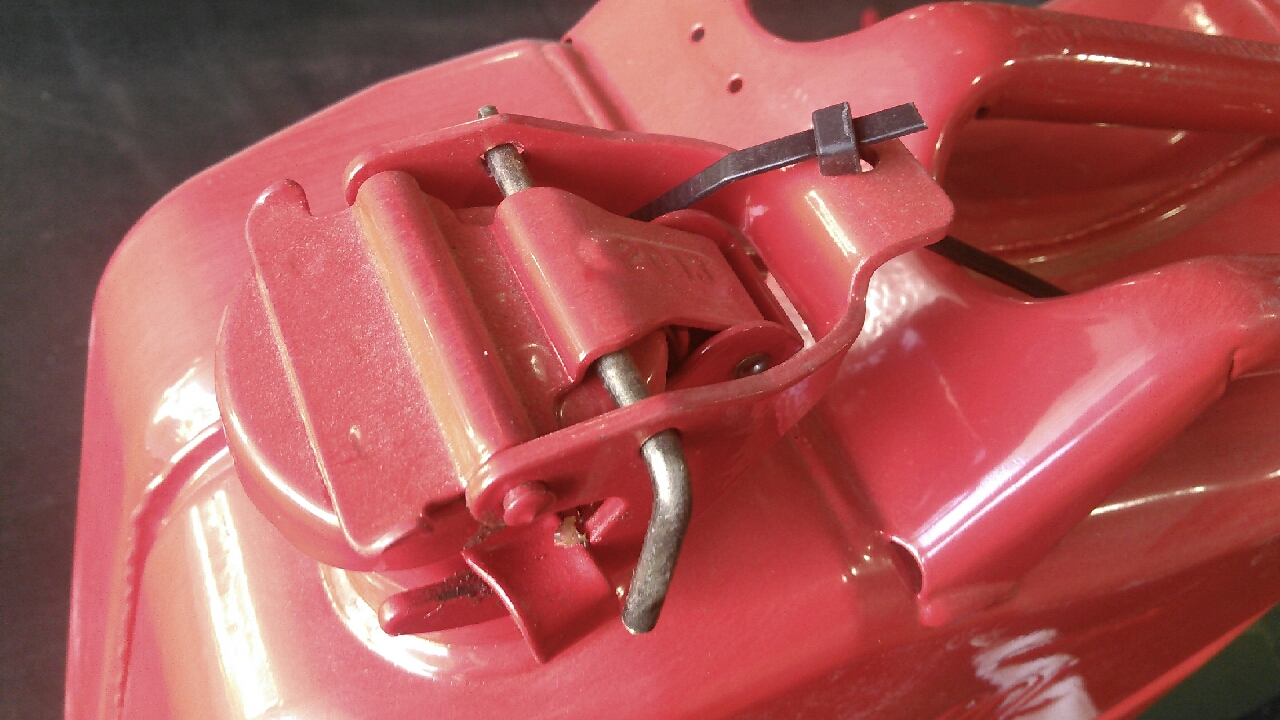
- Jerry Can-4.jpg (682.96 KiB) Viewed 918 times
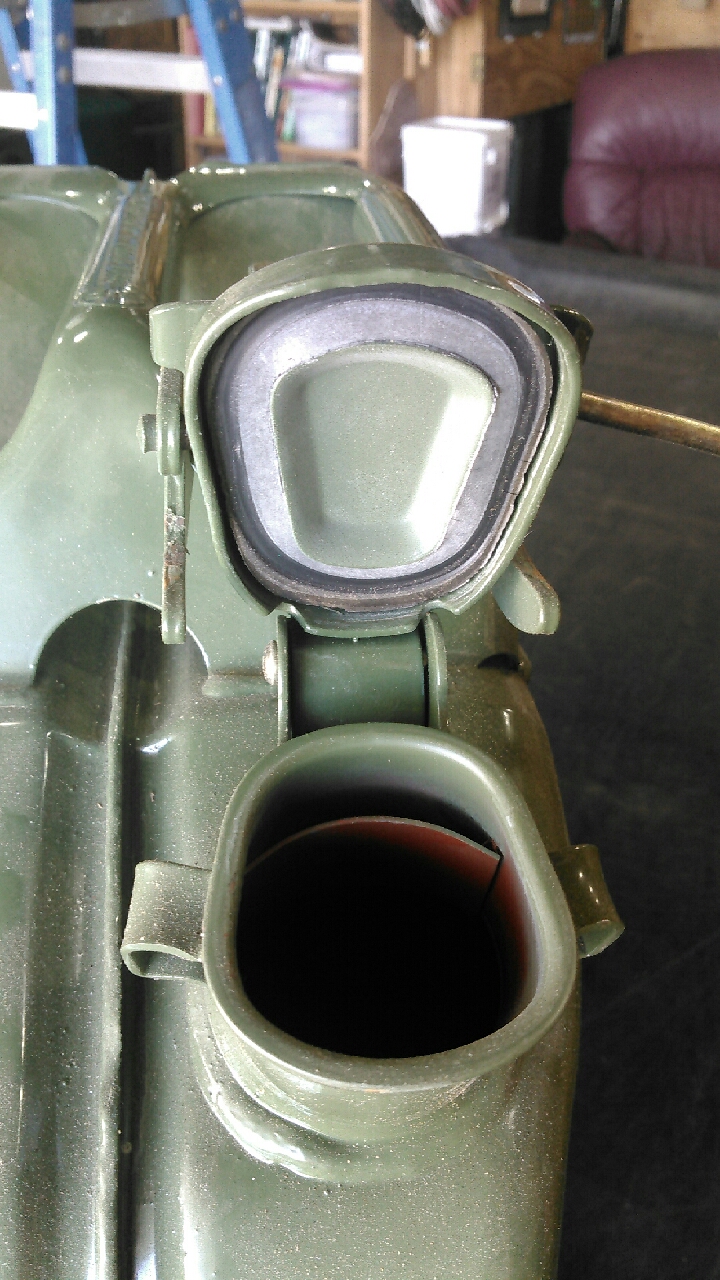
- Jerry Can-7.jpg (729.34 KiB) Viewed 918 times
PICTURE #2 Recessed welded joints of the two piece can body
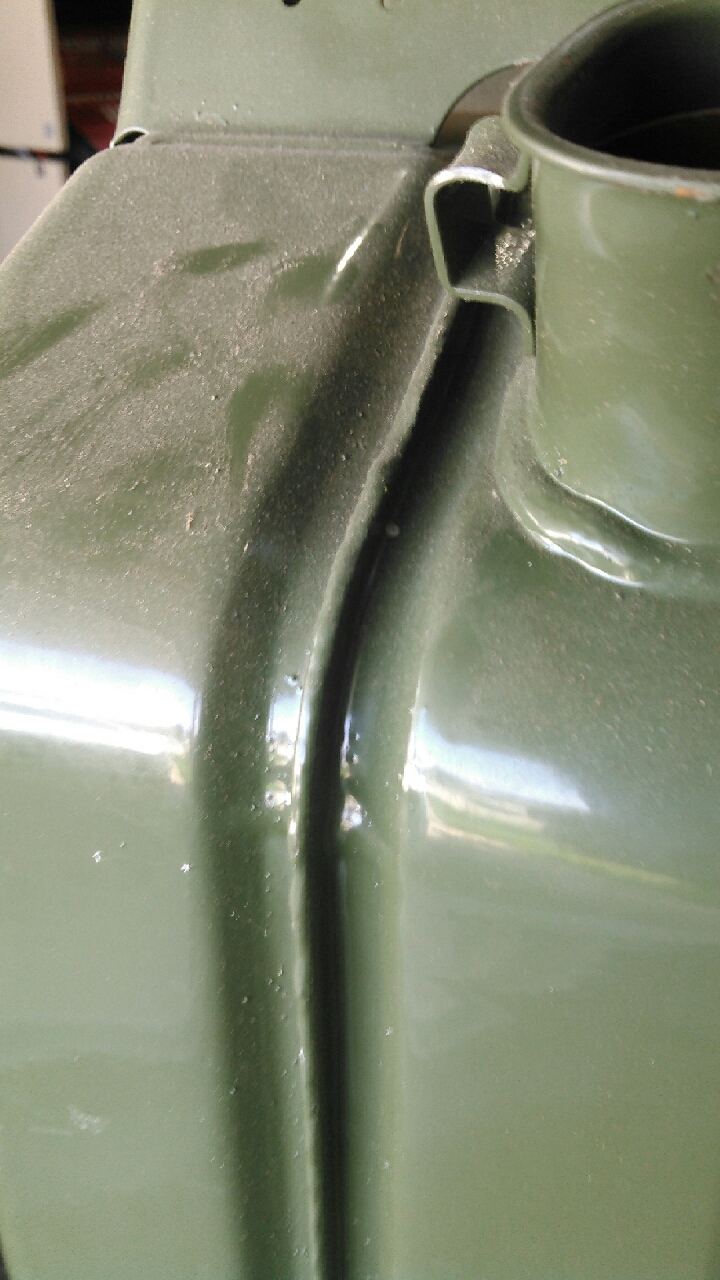
- Jerry Can-5.jpg (657.51 KiB) Viewed 918 times
PICTURE #3 Cheap Jerry Can Knock-off
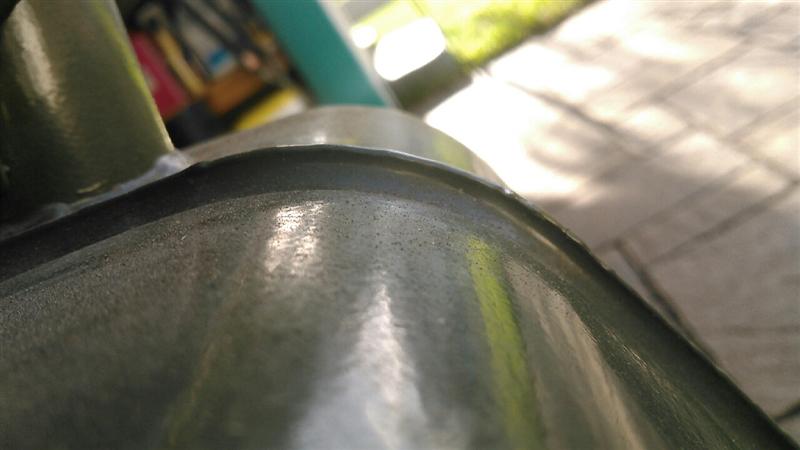
- Cheap Jerry Can Knowkoffs-1 (Medium).jpg (33.55 KiB) Viewed 884 times
PICTURE # 4 Stamped indentations in the sides of the cans that added structural strength
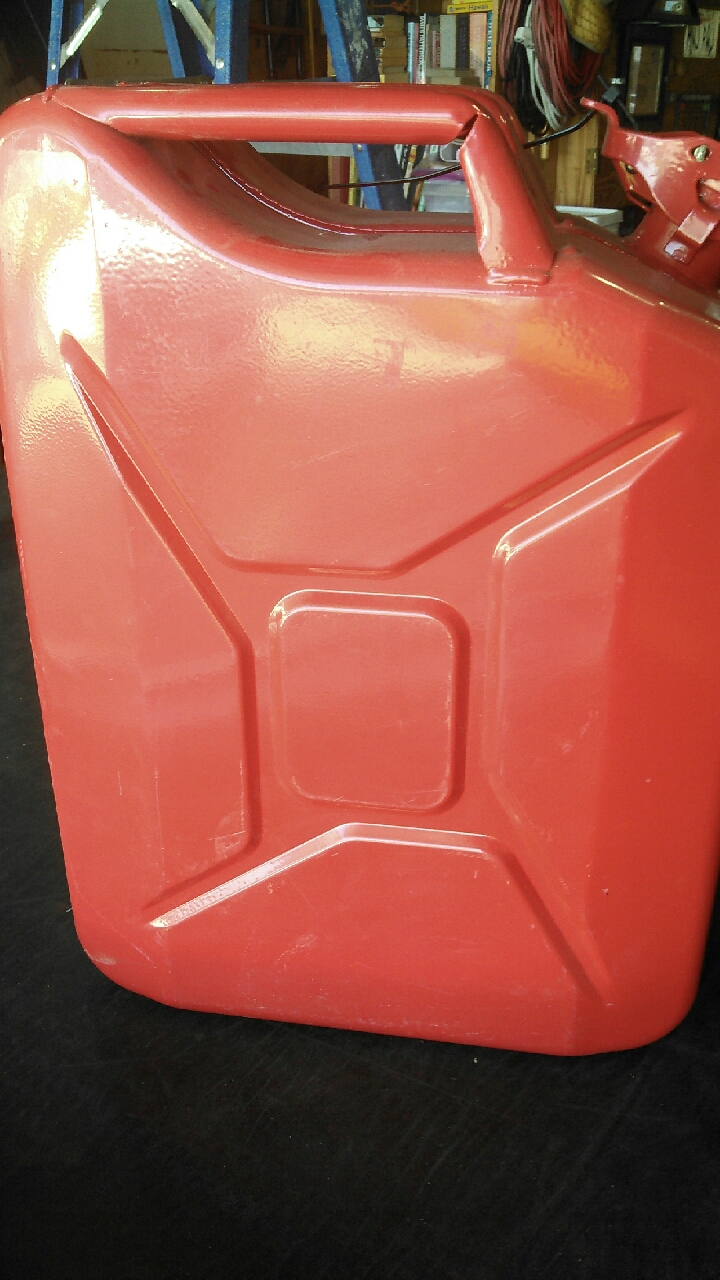
- Jerry Can-3.jpg (660.23 KiB) Viewed 918 times
PICTURE # 5 Three rounded handles that allowed for a single soldier (or four wheel adventurer) to hold up to 4 cans
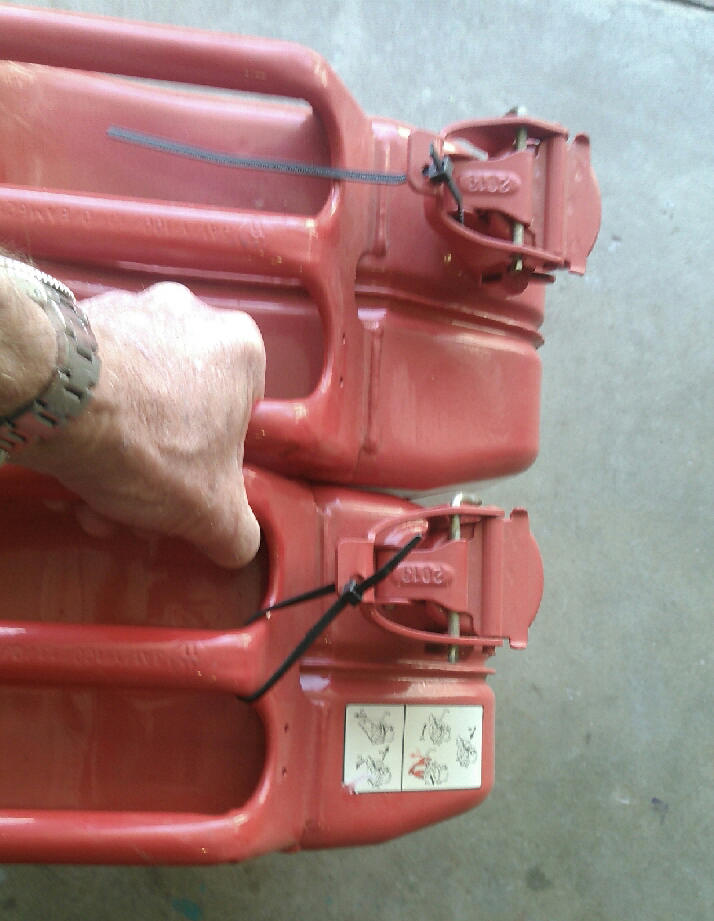
- Jerry Can-2.jpg (77.98 KiB) Viewed 915 times
The most enduring quality of the Jerry Can is that these advantages still make this fuel carrier the very best design, even today. So much so that there are many copies of this can, including ones currently adopted by the military, all of whom are all using basically the same German Jerry can design.